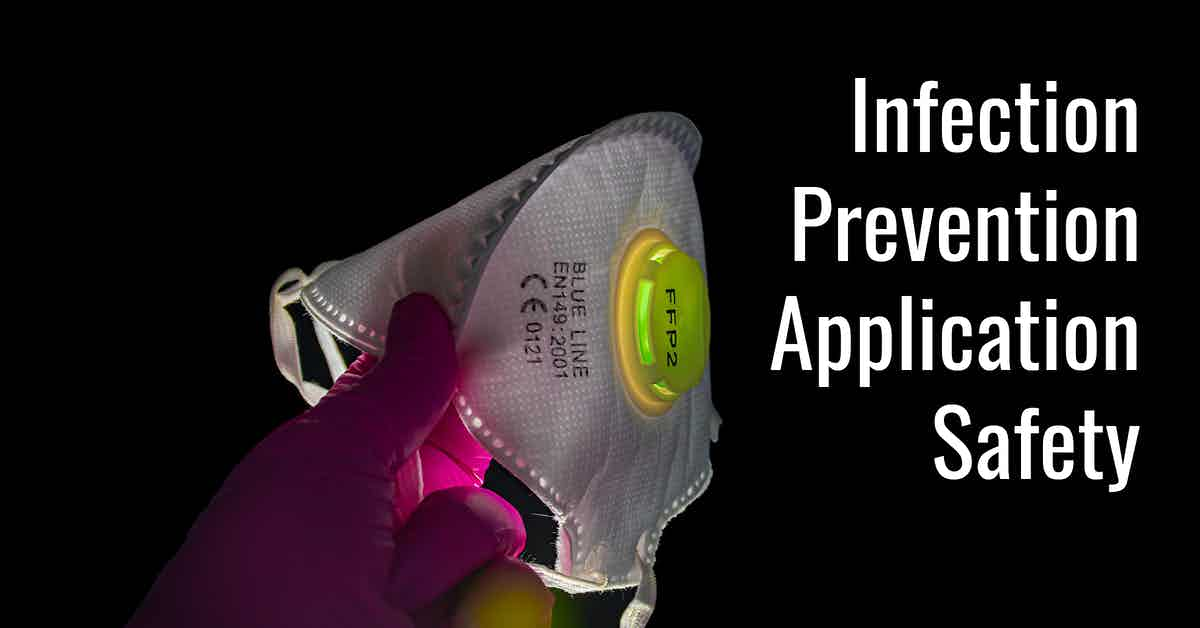Preventing the spread of pathogens, mold, mildew, and bacteria is only half of the challenge. The other half is doing it safely without compromising the health and wellness of service providers and facility occupants.

Assessing Disinfection Service Application Methods
Presently, there are several commonly employed disinfectant application methods, each possessing varying degrees of safety and effectiveness, including:
- Fogging
- Misting
- Trigger spraying
- Backup and pump sprayers
- Electrostatic sprayers
- Applying the liquid directly to a cloth and then applying it to the surface
Trigger spraying has been one of the most popular methods of applying cleaning and disinfectant products for years but has recently fallen out of favor due to the atomization of disinfectant particles, which can cause serious health issues in service providers and other building occupants.
Historically, trigger sprayers have been one of the most popular ways to apply cleaners, sanitizers, and disinfectants.
However, an increasing number of BSCs are moving away from this delivery method.
The reason for this change is that overspray from trigger sprayers can cause particles to become airborne, thereby creating a potential health hazard for janitors and building occupants.
A slightly improved method over trigger spray application, and one you've likely seen recently outside of grocery stores, are backup or pump sprayers.
These systems provide marginally better safety than handheld bottles with trigger sprayers due to the distance facilitated by the handheld wand but suffer from the same issues regarding surface coverage on hard to clean three-dimensional furniture.
Other methods that have increased in popularity recently due to their broad coverage capabilities are misting and fogging, and they work pretty much as described.
A machine, either stationary or handheld, mists or fogs a room with a disinfectant product.
The mist or fog settles on the surfaces and disinfects it.
While that sounds very efficient, these products and methods suffer from several drawbacks, including:
- The chemicals are highly corrosive and can damage facility property, and;
- The HVAC system must be turned off, and the room being disinfected must be sealed, often for several hours.
Fogging, gassing, and misting are fairly new methods for the cleaning industry.
Given the expense, potential health issues, and the need for specialized service providers, they are typically only recommended for extreme cases.
With the advent of COVID-19, more facilities are looking to BSCs for large-scale cleaning and disinfecting services.
One delivery option is a fogging device typically used for cases that require extremely high levels of disinfection.
The downside to fogging is that ventilation systems must be closed off and the room must remain unoccupied during the process, as well as one hour afterward.
Additionally, a number of companies offer chlorine dioxide-based products that are released as a gas and, like fogging, penetrate every area of the room.
An approach that has garnered a great deal of attention recently due to its portability and proven effectiveness in other viral outbreaks is electrostatic disinfection.
What to Know About Electrostatic Disinfection
Electrostatic application methods are not new.
The technology was originally developed in the 1930s for industrial applications and has maintained a strong presence in the auto painting industry for years.
The method uses a handheld sprayer that negatively charges particles as they exit the nozzle.
Most surfaces have a neutral charge, which attracts the negatively charged particles.
Since the particles are all similarly charged, they repel one another and spread out across the surface, providing full three-dimensional coverage.
Additionally, electrostatic disinfection has advanced to the point where it is considered less expensive than conventional methods because it is faster and more efficient.
However:
- The operator must wear protective equipment.
- The surfaces must still be cleaned regularly, and;
- The area being cleaned must be unoccupied to ensure nobody inhales toxic disinfectant chemicals.
Takeaway
The SARS-CoV-2 pandemic forced the rapid assessment and evolution of pretty much every cleaning and disinfection method, product, and tool on the market.
While a few new technologies--gassing, misting, and fogging--rose from near obscurity, their use is only advised for the most extreme needs.
One technology--electrostatic disinfection--which, as is appropriate, has been around for decades, has risen to the top for several reasons, not the least of which is proven efficacy in viral influenza outbreaks in schools.
The equipment is still fairly expensive and requires operational expertise and training.
Additionally, facility surfaces need to be cleaned regularly in order to ensure maximum efficacy.
A proven and cost-effective method for ensuring the highest cleanliness and safety standards is outsourcing daily and specialized custodial services to an experienced service provider.
If you would like more information regarding the effectiveness of high-performance infection prevention and control measures, or if you would like to schedule a free, no-obligation onsite assessment of your facility's custodial needs, contact us today for a free quote!
In Bakersfield CA, call (661) 437-3253
In Fresno CA, call (559) 206-1059
In Valencia CA, or Santa Clarita CA, call (661) 437-3253
In Palmdale CA, or Lancaster CA, call (661) 371-4756

